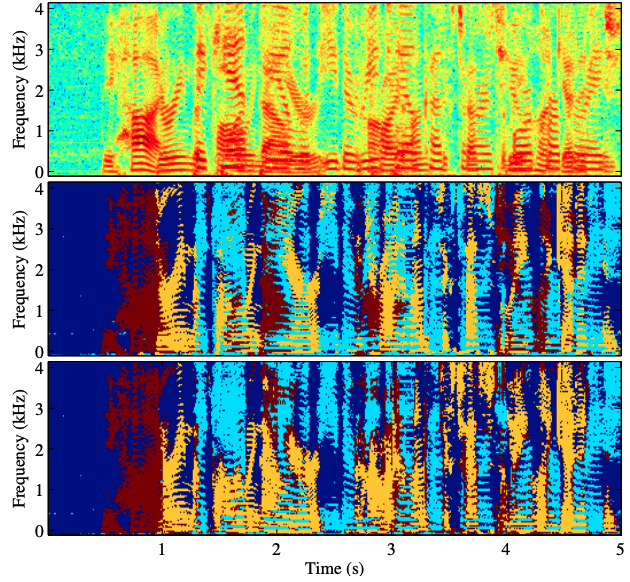Speaker-independent Speech Separation with Deep Attractor Network
Despite the recent success of deep learning for many speech processing tasks, single-microphone, speaker-independent speech separation remains challenging for two main reasons. The first reason is the arbitrary order of the target and masker speakers in the mixture permutation problem, and the second is the unknown number of speakers in the mixture output dimension problem. We propose a novel deep learning framework for speech separation that addresses both of these issues. We use a neural network to project the time-frequency representation of the mixture signal into a high-dimensional embedding space. A reference point attractor is created in the embedding space to represent each speaker which is defined as the centroid of the speaker in the embedding space. The time-frequency embeddings of each speaker are then forced to cluster around the corresponding attractor point which is used to determine the time-frequency assignment of the speaker. We propose three methods for finding the attractors for each source in the embedding space and compare their advantages and limitations. The objective function for the network is standard signal reconstruction error which enables end-to-end operation during both training and test phases. We evaluated our system using the Wall Street Journal dataset WSJ0 on two and three speaker mixtures and report comparable or better performance than other state-of-the-art deep learning methods for speech separation.
PDF Abstract

 WSJ0-2mix
WSJ0-2mix